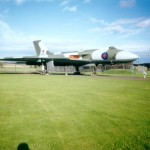RADIO SCOUTING
by Dave Gemmell and the Broomstick Warriors
JAMBOREE-ON-THE-AIR and JAMBOREE-ON-THE-INTERNET.
21st/22nd OCTOBER 2000
Hopefully most of you, Dear Readers, will read this Column before the first JOTA of this new millenium. If you are helping a the Guides or Scouts to run a station please remember that this an event when the young should be doing most of the communicating so please set up each contact as soon as possible. Then get as many boys and girls to “talk on the air” as possible. I have said this before but it’s a bit irritating when you’ve listened to some station you want to contact going on for about 5 or 10 minutes about something or other only to have him repeat the same thing when you eventually do get hold of him. Be very careful as both JOTA and JOTI are important Public Relation events for both Hams and the Guiding and Scouting Movements.
Having said this please remember the age and ability of those with whom you will be dealing. The children are at the stage when they want to try everything for themselves so it is a good time to introduce them to morse. Now before you “scream blue murder” let me add that CW is simple and is an ideal way to introduce an interested person to modulation. When keying a transmitter you are actually moving from 0% to 100% modulation. Secondly anyone can try this for themselves using a whistle or a flash light. So you may have a situation where the learner moves from being slightly to very interested in Ham Radio. This would be a good time to get if the Scout Group you are helping to enter the JOTA Low Power Contest. Perhaps you could build a few QRP transmitters of the single transistor.
Answer any question or query regarding CW positively. Please don’t “condemn” or ridicule morse as this may, strangely enough, only have a negative effect and cause the “inquirer” to take his/her interest else where. You should, however, mention that CW is used to send short messages and is ideal for use in emergencies.
Everything I’ve said about the use of CW can also be applied to construction. Children seem to be interested in everything so show how easy it is to build a simple oscillator. Then have them determine the greatest distance that can be achieved between them and your commercial rig.
If I have repeated myself for the millionth time in this column I still make no apology as these days it seems that despite modern technology there many people, Hams, Guides and Scouts who still do not know the basic principles of their own movements and how to achieve maximum benefit from them.
Please send in your JOTA reports to your local Scout Area Commissioner or JOTA Co-ordinator before the end of November 2000 as the National Report for South Africa must be sent to Geneva before the end of the year. If you aren’t sure who these people are please send them to me at the address below.
If you can, I’m sure Ray Webber ZS6RSW won’t mind you using his e-mail address to send me your contributions to this Column or JOTA/JOTI reports.
My postal address is, as usual, P.O.BOX 77, IRENE 0062. Many Thanks.

